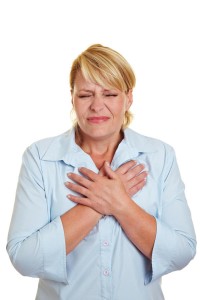Mammary duct ectasia is a condition that usually affects nursing mothers and it develops when the milk duct found below the nipple becomes wide while the walls of the duct becomes thick and the ducts are filled with fluid and cause the milk duct to become clogged with a thick and sticky substance. As a result, the duct can become infected or inflamed. Some women will experience discharge coming from the nipple, tenderness of the breast as well as the inflammation of the clogged duct or periductal mastitis.
Women of perimenopausal age about 45-55 are susceptible to develop mammary gland ectasia, but it can also happen after menopause in some cases.
Symptoms
- Tenderness of the nipple or surrounding area of the breast
- Dirty white, greenish or black discharge coming from one or both nipples
- A lump in the breast or thickening near the duct that is clogged
Mammary duct ectasia is a condition that usually affects nursing mothers and it develops when the milk duct found below the nipple becomes wide while the walls of the duct becomes thick and the ducts are filled with fluid and cause the milk duct to become clogged with a thick and sticky substance. - The nipple is turned inward or inverted
- Redness of the nipple and sometimes the area that surrounds the nipple
- A bacterial infection which is called mastitis can occur in the affected milk duct which causes tenderness of the breast and engorgement of the area found around the nipple or the areola.
- Fever
Causes
- Changes in the tissues of the breast caused by aging. As the person starts to age, the tissues of the breast changes from glandular to mostly fatty which is a process called involution. These changes will eventually result to clogged milk ducts and inflammation due to mammary duct ectasia.
- Cigarette smoking can also cause widening of the milk ducts that leads to inflammation and eventually mammary duct ectasia.
- An inverted nipple can cause blockage of the milk ducts and can cause inflammation and infection. In some cases, it can be an indication of a serious health issue such as cancer.
Treatment
- Apply warm compresses on the affected nipple and the surrounding area at least 30 minutes at 3 times every day in order to help lessen the pain in the breast tissue.
- Use breast pads for discharge coming from the nipple in order to prevent the fluid from leaking through the clothing.
- Wear a support bra that has good support in order to help lessen the discomfort from the breast. A well-fitted bra also helps in keeping the breast pad in place and also helps in absorbing discharge coming from the nipple.
- Sleep on the opposite side of the body that is not affected in order to help prevent swelling and avoid making the condition worse.
- Stop smoking in order to prevent a recurrent infections or an abscess.
- Clean the affected breast every 2 to 3 hours using a mild soap and water.
- Take the prescribed pain medications such as acetaminophen or ibuprofen to lessen the pain caused by mammary duct ectasia.

